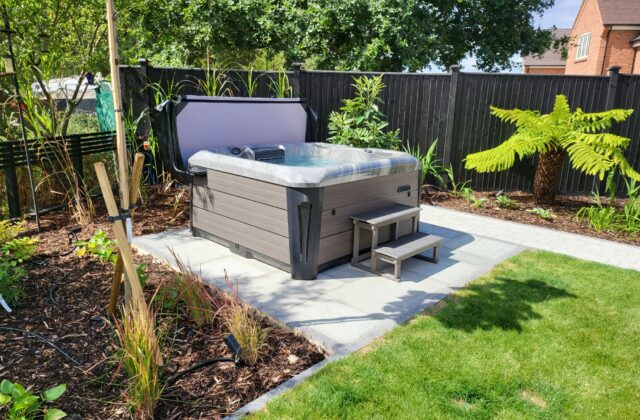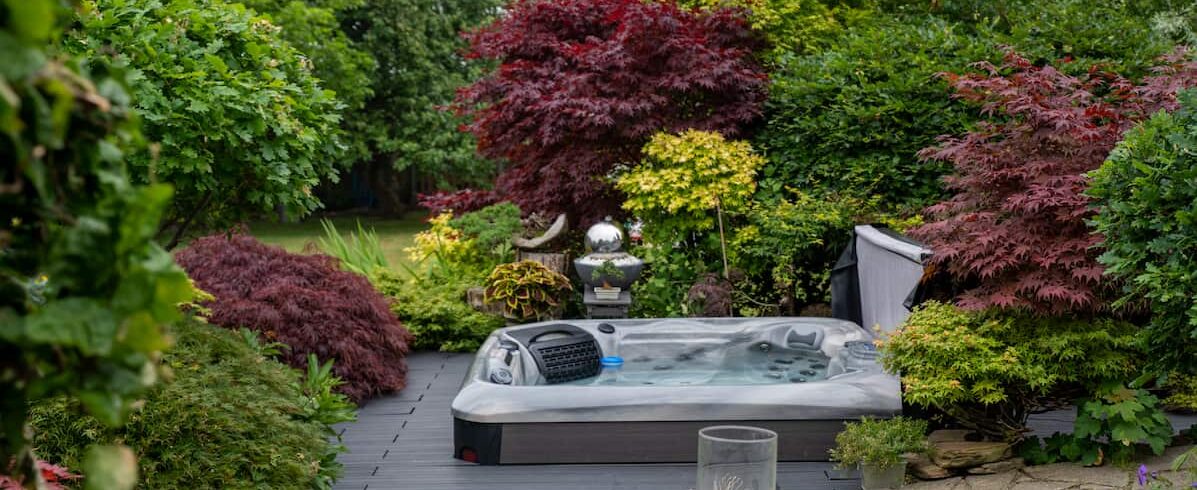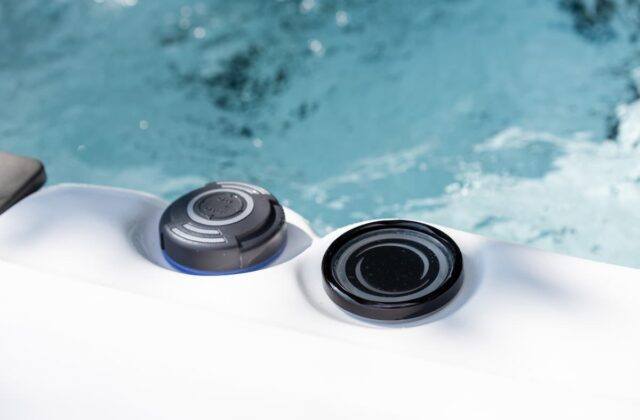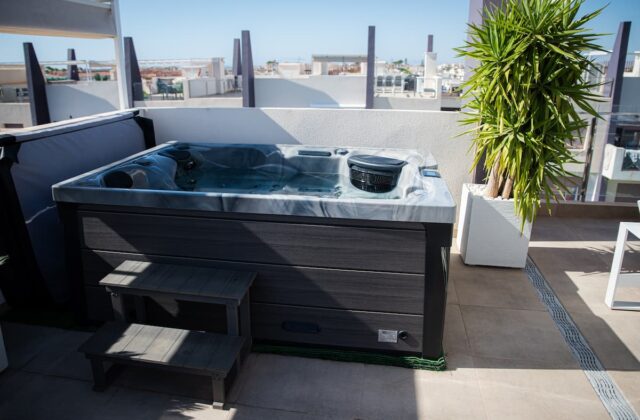Keeping your hot tub clean is of the utmost importance. The heat and dampness of a hot tub are the ideal environment for mould and bacteria to grow, so using an effective sanitizer is essential for keeping your hot tub a safe and pleasant place to be.
When it comes down to sanitizers, there’s one key decision to make: bromine vs chlorine for your hot tub. Both of these options have their pros and cons, but unless you’re a chemist, it can be hard to understand the key differences between each chemical.
In this guide, we’ll take a closer look at each chemical, and how they work to keep your hot tub clean and help you figure out which one is right for you. Let’s get started.
Bromine vs Chlorine: Which is Better?
Deciding whether bromine or chlorine is best suited for your hot tub can be dependent on your budget and allergies. Bromine is less harsh on the skin and is more expensive, meanwhile, chlorine is harsh on the skin and less expensive.
How Do Chlorine and Bromine Work in Your Hot Tub?
Both chlorine and bromine belong to the class of chemicals known as halogens, but they act slightly differently to each other. Let’s take a closer look.
Chlorine
Chlorine is what’s known as an oxidising agent. This type of chemical destroys bacteria and fungi by removing electrons from their atoms, destroying the very fabric of these germs.
Many bleaches work along similar lines to chlorine, and they share a similar smell, which you typically find in swimming pools. This smell is the result of chloramines, which are a product of chlorine’s chemical reaction with the germs. To stop your hot tub from smelling like a pool, you’ll need to use a strong oxidiser, called shock, on your hot tub.
Bromine
Bromine is an oxidising agent, like chlorine. Unlike chlorine, however, bromine doesn’t produce chloramines, but they do produce a less smelly kind of chemical called bromamines.
What Are the Pros and Cons of Chlorine and Bromine?
Now that we know how chlorine and bromine both work to keep your hot tub clean, it’s time to take a look at some factors that might make you choose one over the other. In this section, we’ll look at the positives and negatives of each chemical when it comes to hot tub sanitization.
Pros of Chlorine
- Chlorine is more commonly used than bromine, which makes it cheaper and easier to find
- It’s available in many different forms such as liquid and granules
- Works faster than bromine
Cons of Chlorine
- Chloramines are a smelly by-product
- Can irritate skin or eyes
- Chloramines can cause breathing difficulties
- Requires more regular use
Pros of Bromine
- Gentler on the skin and eyes than chlorine
- Does not produce strong smells
- Lasts longer
Cons of Bromine
- More expensive than chlorine
- Less powerful than chlorine
- Doesn’t work as well if exposed to sunlight
Bromine vs Chlorine: Hot Tub Levels
Neither chlorine nor bromine should be present in large amounts in your hot tub. Both of these chemicals should only be present in the ‘parts per million’, or ppm, range. For chlorine, there should only be around 1.5 ppm, whereas for bromine, you need more, around 3 ppm.
Using too much of either chemical can have serious side effects. High levels of chlorine can result in breathing problems, chemical burns, and poisoning. High levels of bromine have similar effects and are also toxic.
Is Your Hot Tub Outside?
When choosing between chlorine and bromine, you should consider your hot tub’s location. If it’s outside, bromine may be less ideal, as it reacts to UV light more than chlorine, which means that sunlight will remove bromine from your water more readily than chlorine.
However, you shouldn’t completely write bromine off if you have an outdoor hot tub. Bromine is more stable at higher temperatures, which means it can deal better with a hot tub’s conditions than chlorine can, one of the reasons that you’ll need to treat your hot tub less often if you use bromine. You can also use a hot tub cover to reduce the amount of UV light that your hot tub absorbs.
Adding Chlorine and Bromine to Your Hot Tub
Chlorine is available in a number of different form factors, but the most common types are granules and tablets. These formulations mix the chlorine or bromine with other chemicals, as at room temperature they are a gas and a liquid, respectively.
Granules you can add to the water manually, dispersing chlorine and bromine into the water. If you decide to use tablets, you will need to fit them into a floater or basket that will release the chemicals over time.
Remember to always follow the instructions on the packaging.
A Note On Safety
You must never mix chlorine and bromine together. If you mix the two together, it will produce both chlorine gas and bromine gas, which are potentially lethal. Only ever use one treatment.
If you decide to switch from chlorine to bromine, or vice versa, consult an expert beforehand to make sure that you’re switching safely.
Bromine vs Chlorine: Which Is Right for Your Hot Tub?
There is no single answer to this question, as it will depend on your requirements and budget. However, bromine tends to be a better choice, if you can afford it. This is due to its stability, the fact that it is gentler on the skin and eyes, and has less of an odour than chlorine does.
However, if you decide to go with bromine, you’ll need to factor more into your hot tub maintenance budget, as bromine costs can be double that of chlorine. You’ll also need to give bromine longer to sanitise your hot tub, as it is a weaker oxidation agent than chlorine. This is somewhat counterbalanced by bromine’s stability, which means that you’ll need to treat your hot tub less frequently.
Chlorine vs Bromine FAQs
Is Bromine Safer Than Chlorine?
Both chlorine and bromine are safe to use, provided you follow the instructions provided. However, caution should be used when using chlorine if you have asthma, as it can trigger asthma attacks.
Will I Need to Shock a Hot Tub if I Use Bromine?
If you use bromine, you will still need to shock your hot tub every so often to get rid of the noxious compounds called bromamines.
Jamie Smith is the general sales manager at Platinum Spas, and has years of professional expertise in the hot tub industry. From Business Development to Sales, Jamie has helped grow our business into a global powerhouse, working with our partners and developing our offering as we strive to be market leaders.
Latest posts by Jamie Smith
(see all)


